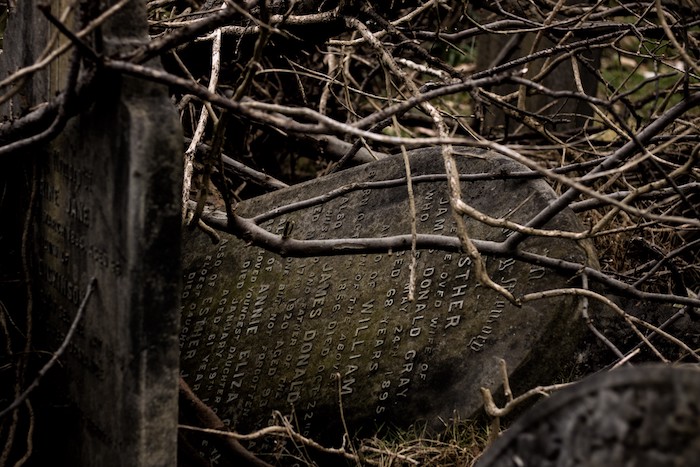In the wake of Covid-19, we are all grieving. How can we come to terms with death — and what does it teach us about living?

In 2015, I published a book. It began like this:
“A wake,” my mother said. “To sit with the dead.”
We were on our way to West Virginia, to an unremarkable two-story colonial where my grandfather’s remains had been washed and laid out for viewing. It had been raining all night, but apparently no one in this homey funeral parlor had been sleeping. They’d been sitting up with the body. Sitting up — with the body — all night.
There are no good adjectives to describe my feelings about this. I was seventeen and grieving, but I wasn’t horrified. Shocked, yes, but the idea was strangely enticing, even fascinating. Really? We do that? This wasn’t my first family death, after all, but it was the first time I’d encountered the intimacy of this ritual.
It was also the first time I’d considered the buzzing activity that surrounds the newly dead. I asked myself what seemed like suddenly obvious questions — Why wash a body before putting it in the dirt? Why sit awake with someone now permanently asleep? Even the practice of embalming the body (which prevents decay) before interring it in the ground (where it is supposed to decay) struck me as a very strange kind of ritual. With only a minor leap of morbid imagination, care of the newly dead began to resemble care of the newly born. But it also brings us face to face with our own mortality.
When we witness death, we must grapple with its finality, but also with the knowledge that one day we, too, must die. Where once this was understood as the natural order of things, we now find ourselves conflicted and less willing to see death as “natural.” If anything, death breaks into our lives as an unexpected surprise.
We are not used to death and dying in the West, and most particularly not in the modern United States. The Victorians (in the U.S. and U.K.) had incredibly complex mourning rituals, including mourning jewelry, photographs of the recently dead (momento mori photography), and the public wearing of mourning clothing.
Like birth, death was a social event that drew communities together. In a large city, scarcely a day would go by without some visible sign of bereavement. Compare this with our modern standards, where illness and death are either hidden away in hospitals or sensationalized through popular culture, and where prolonged grief is likely to be medicated as abnormal, rather than openly acknowledged as an inevitable part of life.
Elisabeth Kübler-Ross, a Swiss American psychiatrist, developed her theory of the five stages of grief in 1969 as a response to a lack of information on death and dying in the curriculum of medical schools — but even these hardly cover the enormous range of emotions that accompany death, and they certainly weren’t a plan for how better to go about the process of grieving. Later attempts at death positive education have been on the rise, but can be blind to the way privilege often determines “positivity” about death.
Then, in 2020, the pandemic descended upon us with death tolls on a global scale. We crashed into a set of experiences most were ill-prepared to deal with — and on top of this, the nature of the virus stole away even our usual means of communal grieving. Covid-19 has precipitated three separate types of loss; first, the loss of loved ones, of friends, of connections we always assumed would be there. Second, the loss of personal contact so much a part of grieving. And third, and perhaps most jarring: the loss of an illusion. We’ve been stripped of the comfortable idea that we could plan for tomorrow, or that we will all die of comfortable old age.
Death has come. And we were not expecting it.
Looking out at the expanse of still-spiking cases in the U.K. and parts of the U.S., overwhelmed crematoriums in India, and the struggle to get higher percentages vaccinated, it’s clear that the first crisis isn’t necessarily over. But a second epidemic is coming: a shadow epidemic of psychological grief as we try to fit puzzle pieces of broken yesterdays to almost-tomorrows. We need help. So: what next?
I think it’s time for a journey. In Death’s Summer Coat, I worked backward through history, and sideways into other cultural contexts, to see how we got to “now.” Along the way, I learned how we might find paths to something better. I’ve decided to revisit those paths from a post-outbreak perspective, in hopes it might shed light on the road ahead. I hope you will join me. Sharing our stories provides hope and community so that none of us face death alone in the silent dark.
If you would like to hear a bit more from me, I gave a brief chat on the topic for the Museum of Contemporary Art, Cleveland. Until next time, go gently with yourselves.
Complete Article ↪HERE↩!
